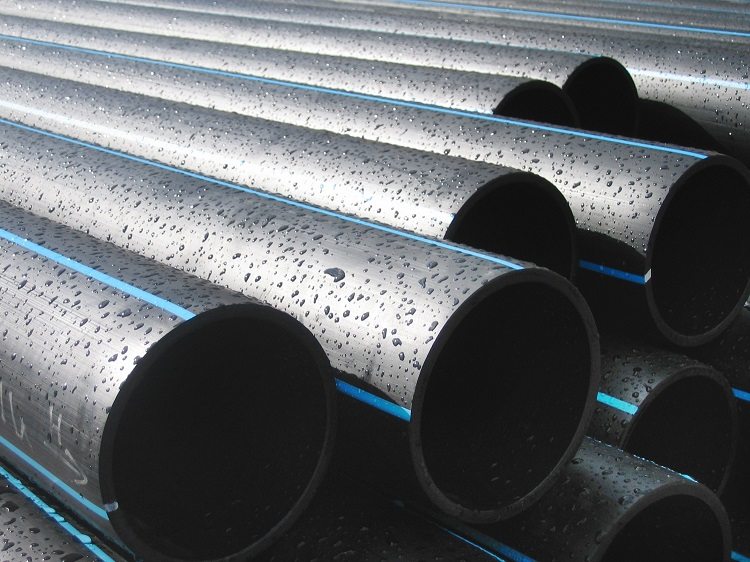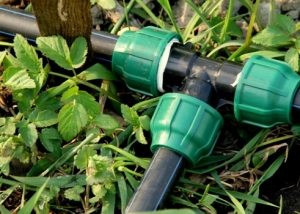To protect against damage to various cables laid by ground or underground, a strong and rigid material is required. The use of technical PND pipes for this purpose is one of the most successful solutions. This is explained by the fact that low-pressure polyethylene (abbreviation ˗ HDPE) is characterized by resistance to atmospheric phenomena, strength and sufficient rigidity. It should be noted that on the basis of technical PND pipes, external and internal pressureless sewage can also be created.
Content
Features and Benefits
These products are widely used in the national economy, including in the electrical industry, due to the presence of the following properties:
- long term of operation. Compared to similar products, but made of steel, a technical polyethylene pipe will last 3–5 times longer;
- complete absence of corrosion and chemical inertness;
- resistance to prolonged exposure to aggressive substances;
- aversion to condensation. This property is due to the low thermal conductivity of polyethylene;
- elasticity. Even when a liquid freezes in a polyethylene pipe, it will not collapse;
- light weight. Due to this, the cost of loading and unloading and installation works is significantly reduced;
- affordable price.
A wide range of technical pipes made from HDPE. The range of possible wall thicknesses is 2 ... 22.7 mm, and the nominal outer diameter is 16 ... 250 mm. Some manufacturing companies have the technical capabilities to produce such custom-size products on order. So, today you can see proposals for the supply of polyethylene pipes with a diameter of 250, 315 and even 400 mm.
Classification of low pressure polyethylene pipes
Depending on the strength characteristics and wall thickness, current GOSTs divide HDPE pipes into the following classes:
- lungs - "L";
- heavy - “T”;
- medium light - "SL";
- moderate - “ST”;
- medium - “C”;
- lite averages - “OS”.
Products with a diameter of up to 63 millimeters are manufactured in bays. The length of the pipes in this case reaches 200 meters. Larger diameter products are produced in 6 or 12 meter sections.
It is noteworthy that the PND pipe for the cable is often equipped with a special broach, due to which the procedure for laying it is greatly simplified. In addition, it may have a corrugated outer surface or be smooth on both sides. In the first case, the product is implemented as a two-layer structure. In this case, the protection of the inner layer from damage is provided by the ribs protruding on the outer surface of the pipe.
Helpful information! Corrugated pipes made of low pressure polyethylene are excellent for underground installation. In addition, their pouring with a concrete screed is allowed.
HDPE pipe. Technical specifications and application features
Two types of recycled polyethylene are used as raw materials for the manufacture of products of this type:
- in accordance with the requirements of GOST 16338, these are PND grades 286, 277, 276, 273 and 271;
- PND of grades 16803-170, 15803-020, 15303-003 and 10803-020 corresponds to GOST 16337.
On the outer surface of polyethylene pipes, the presence of creases, cracks, swelling of the material is unacceptable, it should be smooth. On the walls should not be observed stratification of the material.
On sale, these products come in black. The labeling should contain information about the manufacturer, dimensions and specifications.
The electrical insulation properties of polyethylene are of particular value. Not every plastic is able to withstand voltages of the order of 150 kV per millimeter! Due to this, electrotechnical PND pipes are successfully used to protect power and low-current cables that are poured into monoblocks or laid in the ground. In addition, with their help, electrical wiring (network, telephone, television) is carried out inside the house on trunk lines. If the cable insulation is damaged, the pipe will protect people from electric shock. And the incombustibility of polyethylene technical pipes prevents the ignition of electrical communications from a short circuit in the cable.
Several disadvantages of polyethylene do not reduce the demand for technical pipes made from it. This material does not tolerate exposure to UV radiation. Therefore, in order to exclude the possibility of failure of engineering communications, a PND smooth electrical pipe is not recommended for laying ground-based external networks.
Helpful advice! It is possible to equip the hidden laying of the electric network created using the HDPE technical pipe for cable in concrete walls, raised floors or behind plasterboard plates.
In addition, these products are inferior to metal counterparts in mechanical strength. Its insufficient level does not allow to install a polyethylene pipe in places where large mechanical loads are fixed.
Mounting Features
Laying a polyethylene technical pipeline must be carried out taking into account some features.
- Component preparation. Smooth technical PND pipe for the cable must be cut with a hacksaw into segments of a certain length. Lay the received segments for a while before installation should be horizontal. Cut corrugated HDPE pipes to protect the cable, use special scissors. You can lay segments in an upright position. To prevent dirt from getting inside, cover the ends with plugs. This will ensure ease of cable pulling.
- Transitions in the trench should be smooth. To fulfill this requirement, make its depth a little more (5˗10 cm) from the projected one.
- Before laying HDPE pipes for cable, the bottom and walls of the trench are thoroughly cleaned of stones and debris. Having removed the protrusions present, strengthen the walls.
- If there is water in the trench, pump it out.
- When turning the system at a right angle, the bending radius should be at least two meters.
- To avoid accumulation of condensate on the surface of the polyethylene pipeline, mount it with a slope directed towards the boxes specially placed to collect moisture.
- If laying a smooth pipe of technical PND for a cable is carried out in a trench, the depth of which exceeds 2 meters, it is recommended to concrete the channel. A layer 8–10 centimeters thick will be enough to protect the pipeline from excessive deformation.
- Laying in the foundation requires subsequent concreting.
If the temperature in the street is high, before finally filling up the corrugated or smooth HDPE pipe with cable, the temperature of the pipeline and soil must be equalized. To this end, fill in a ten-centimeter layer of sand, and complete backfilling with excavated soil after a while.
Helpful information! To create transitions between segments with different diameters, you can use different connecting elements. But the greatest durability of PND pipes for the cable will be provided by temperature welding of the ends of compression fittings and pipe edges.









